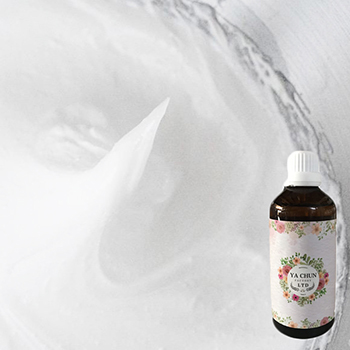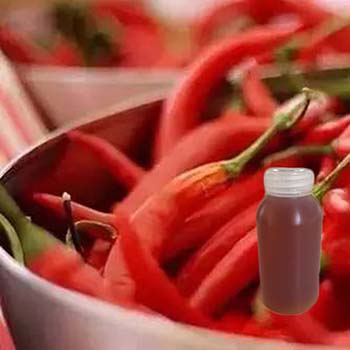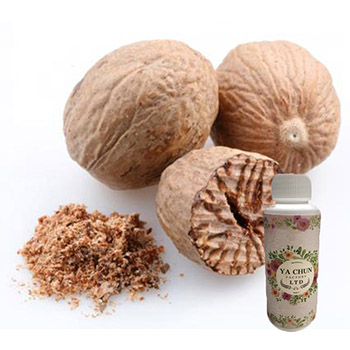目前購物車內沒有商品
Abstract:
Recent studies have indicated that several plant extracts reputed to be lactogenic are capable of inducing b-casein synthesis in mammary epithelial cells. This enhancement is mediated through a stimulation of prolactin release from lactotropes in anterior pituitary. Therefore it is admitted that these extracts are capable of stimulating prolactin secretion from hypophysis. A partial purification of these extracts, revealed that their active compounds are pectin in most cases and b-glucan in other cases. In this work, the effect of various concentrations of both pure pectic acid and b-glucan on prolactin secretion from ewe hypophysis fragments is investigated. It is shown that pectic acid in the 50-150 mg/ml range concentration and b-glucan in the 200-400 mg/ml range concentration are capable of stimulating prolactin secretion significantly (P<0.05, P<0.01), from hypophysis explants.
Keywords: Pectic Acid, b-Glucan, Prolactin Secretion, Ovine Pituitary Explants.
The cell wall of most fungi is composed of glycoproteins, β-glucan, chitin andα-glucan. Previously, we showed that in the cell wall of the ascomycetous fission yeast Schizosaccharomyces pombe, α-glucan displays a dimeric structure that is composed of two covalently-linked building blocks, each consisting of a linear (1→3)-α-glucan segment
with a small number of (1→4)-linked residues at its reducing end, indicating a two-stepbiosynthetic mechanism. In contrast, the structure of α-glucan in spore walls consists of a single (1→3)-α-glucan monomer, suggesting an alternative, single-step biosynthetic mechanism. Here, we examine the chemical structures of α-glucans from the cell walls of
seven ascomycetous and basidiomycetous species. We found that the α-glucans from the cell walls of Lentinus edodes and Cryptococcus neoformans Cap67, similar to α-glucan from fission-yeast cell walls, occur as dimeric structures, whereas the α-glucans from Pleurotus ostreatus, Piptoporus betulinus, Neurospora crassa, and Schizophyllum commune occur as monomeric structures. Interestingly, the fruiting bodies of Laetiporus sulphureus contain both structures of α-glucan. We conclude that for the biosynthesis of fungal α-glucan, both one-step and two-step biosynthetic mechanisms are conserved in evolution.
Introduction:
Plant extracts are traditionally used in various societies for their pharmacological properties. Some plants which are reputed to be lactogenic have the capacity to enhance milk secretion in lactating women. Recent studies in this field have indicated that these extracts induced b-casein synthesis in rat mammary gland in vivo (Sawadogo & Houdebine, 1988; Sawadogo et al., 1988). It was observed that this effect is mediated through an effect on prolactin (PRL) secretion (Sawadogo & Houdebine, 1988) (Sawadogo & Houdebine, 1988; Sawadogo & Houdebine, 1989). The extracts proved to stimulate secretion of growth hormone and cortisol in addition to PRL, in vivo (Sawadogo & Houdebine, 1988). It is admitted that some plants in Malvaceae, Linaceae, Euphorbiaceae and Umbelliferae families have the lactogenic capacity (Sawadogo & Houdebine, 1988). Chemical analysis of these extracts revealed that active compounds are polysaccharides rich in pectins in most cases and rich in b-glucan in other cases (Sawadogo & Houdebine, 1988,1989).
Both pure pectic acid and b-glucan showed a strong capacity to trigger PRL and GH secretion in experimental animals when injected intravenously (Sawadogo & Houdebine, 1988). From these data, it was concluded that pectic substances and b-glucan are the active lactogenic compounds existing in plants, and that their effects are mediated through the secretion of PRL and possibly of GH and cortisol. In vitro experiments have shown that pectic acid is able to induce the secretion of PRL, GH, LH and b-endorphin from rat hypophysis (Sawadogo, 1988). Moreover, this compound was shown to stimulate b-casein secretion from rabbit mammary gland in (Sawadogo & Houdebine, 1988). The mechanism of action of the plant extracts is not yet known. Whether the lactogenic substances stimulate PRL secretion in vivo through a direct action on pituitary cells or through an indirect effect on hypothalamus hypophysis axis is not known. To get an answer for this question, the effect of various concentrations of lactogenic substances on PRL secretion from incubated ewe hypophysis fragments was investigated. Results confirm those previously obtained in a preliminary experiment (Sepehri et al.,1990). In this study, the optimal concentrations of lactogenic substances which have maximal stimulatory effects were determined.
Fungal cell morphology and integrity depend on cell-wall polysaccharides. The cell wallof most fungi consists mainly of glycoproteins and four types of polymers, namely (1→3)-b-glucan, (1→6)-b-glucan, chitin, and (1→3)-b-glucan. Disruption of enzymes involved in cell-wall synthesis may cause cell lysis. For instance, mutations in (1→3)-b-glucan and(1→3)-b-glucan synthases may lead to cell swelling or cell lysis (Ishiguro et al. 1997;Hochstenbach et al. 1998). Because most fungi possess similar structural polysaccharides, theenzymes involved in their assembly form ideal targets for the development of novel antifungal drugs (Georgopapadakou & Tkaz, 1995; Radding et al., 1998; Onishi et al., 2000; Ohyama et al.,2000; Feldmesser et al., 2000; De Pauw, 2000; Georgopapadakou, 2001; Kurtz & Rex, 2001).
Recently, we have identified a putative (1→3)-b-glucan synthase, Ags1p, in fission yeast Schizosaccharomyces pombe (Hochstenbach et al., 1998). Based on its hydropathy plot and aminoacid sequence similarities, we identified three Ags1p domains, namely an intracellular synthase domain, a C-terminal multipass transmembrane domain and an N-terminal extracellular domain that might act as a transglycosylase (Hochstenbach et al., 1998). By examining the chemical structures of -glucan from cell walls of wild-type cells as well as from a (1→3)-b-glucan synthase mutant that showed an aberrant cell morphology, we proposed a model for the mechanism of action of Ags1p (Chapter 2). In short, we found that fission-yeast b-glucan is composed of two (1→3)-b-glucan polymers that were covalently linked via a short stretch of (1→4)-linked residues. The b-glucan from themutant strain, however, was composed of only a single b-glucan monomer, indicating that Ags1p is essential for both the synthesis and coupling of b-glucan building blocks, and therefore displaying a two-step biosynthetic mechanism.
In fission yeast, four genes homologous to ags1+, namely mok11+, mok12+, mok13+, andmok14+, were identified that can be depleted without forming a noticeable phenotype (Hochstenbach et al., 1998; Katayama et al.,1999). Based on DNA-microarray analyses, Mata et al.
(2002) showed that ags1+ was downregulated, whereas the mok+ homologs were upregulated during meiosis, indicating that these genes may encode b-glucan synthases required for spore-wall formation. Indeed, recently we have identified two (1→3)-b-glucans in fission-yeast spore walls (see Chapter 4). Importantly, unlike b-glucan from cell walls of vegetatively-grown cells, spore-wall b-glucans are composed of single (1→3)-b-glucan monomers, indicating a one-step biosynthetic mechanism. b-Glucan synthases homologous to fission-yeast Ags1p have been identified in the fungi Aspergillus fumigatus (with Genbank accession numbers AAL18964 and AAL28129), Neurospora crassa (with protein identification numbers NCU02478.1 and NCU08132.1), Schizophyllum commune (H.A.B. Wösten, personal communication) and Cryptococcus
neoformans. Interestingly, these homologous enzymes also have a similar multidomain structure as Ags1p. Therefore, we wondered whether also the reaction products of these synthases may be conserved, and thus, whether their b-glucan structures are similar to cell-wall or spore-wall b-glucan of fission yeast.
Here we examine the chemical structures of cell-wall b-glucans from seven fungal species and compare the chemical structures with those of b-glucans from fission-yeast cell walls and spore walls. By using high-performance size-exclusion chromatography (HPSEC) in combination with chemical analysis and NMR spectroscopy, we found that in two out of seven fungi an b-glucan is present as dimers similar to cell-wall b-glucan from fission yeast, indicating a two-component biosynthetic mechanism. In four species the b-glucan is present as monomers similar to b-glucan from fission-yeast spore walls,indicating a one-component biosynthetic mechanism. One species, Laetiporus sulphureus,bears both structures. These one-component and two-component biosynthetic mechanisms have been found in both Ascomycetes and Basidiomycetes, indicating that both mechanisms are conserved in evolution.
Materials and Methods:
Chemical Pectic acid (poly-D-galacturonic acid) was from Fluka and b-glucan from Sigma. These materials were dissolved in 0.7% NaCl (pH=7.8) after stirring for 1 hour at 30°C. The pH of these solutions (1 mg/ml) which was 3.2 and 5.6 respectively, was neutralized by 0.01M NaOH. Since above the mentioned compounds are only partially soluble in water, the solutions were centrifuged at 3.000 g for 10 minutes and only the supernatant was added to the incubation Medium 199 at pH 8.2.
l Animals: Mature ewes which have not been pregnant were uses (5.5-6.5 months old, 13.5-16.5kg).
Incubation of hypophysis fragments:
hypophysis were harvested immediately after the sacrifice and transported to the laboratory in culture medium. The gland was cut into fragments of 1 mm3 with a razor blade. About 20 mg of tissue were spread on each stainless grids and incubated in Medium 1991 ml/ grid in 35 mm culture dishes at 37°C and under 95% O2, 5% CO2 atmosphere. In this experiment, the samples were first incubated in a medium with none of the compounds for 30 minutes (preincubation) to allow the discharge of lactotropic cells, and to determine the basal level of PRL secretion in each dish. The medium was collected and a fresh medium was then added without (control) or with the above-mentioned compounds at various concentrations and incubation was pursued for one additional hour (first incubation). After collecting the media, the samples were incubated for one additional hour in conditions similar to the first incubation (second incubation). The medium was then collected and kept frozen at 20°C until prolactin measurements. Sterile condition was not necessary in this work since incubation time was short. Nevertheless, all the culture steps were carried out in a culture room under O2 flux to minimize contamination.
Prolactin measurement:
PRL was measured in the culture medium using a radioimmunoassay (RIA) in duplicate samples. In all cases, the hormone concentration was measured in incubation media of each dish after the pre-, the first and the second incubation. The hormonal content of the preincubation medium reflects the basal secretion level of each hypophysis, and it depends on the amount and the quality of the tissue present in each dish. The PRL content of the first and second incubation media reflects of the added compounds. In each experiment, ten dishes were used as control and ten dishes with added compounds for each assay. Each result is the mean SD of ten dishes. As expected, the concentration of PRL in the first and second incubation media of the control dishes was lower than in the preincubation medium. This drop in the second incubation was slightly more intensive. Therefor, the PRL level in the first and second incubation media of control dishes was taken as a reference (100% secretion) and PRL levels in each group of dishes were compared to it.
Results:
Effect of b-glucan on PRL Secretion
Various concentrations of b-glucan (25-500 mg/ml) added to the incubation media of hypophysis fragments showed a clear effect on PRL secretion (Figs. 3 & 4). The maximum stimulation was in the 200-400 mg/ml range of concentration. At concentrations more than 400 mg/ml, b-glucan had less stimulatory effect. These results were observed in the first and second incubations in a similar way. Results in Figure 3 shows the stimulatory effect of b-glucan on PRL secretion, which is significant (P<0.05 or P<0.01) at concentrations of 300 to 350 mg/ml. Figure 4 which shows the percentage of PRL secretion in various concentrations of b-glucan, indicates that PRL secretion was strongly stimulated (from 103% to 230%).
Conclusion:
The mechanism of action of lactogenic plant extracts on PRL secretion is unknown. Pectic substances and b-glucan were shown to stimulate, in vivo, PRL, GH and possibly cortisol secretion, to induce b-casein synthesis in mammary gland. The data reported here clearly show that these compounds stimulate PRL secretion when added to ewe hypophysis fragments. It was therefore concluded from these data that these compounds act as unspecific secretagogues through a direct effect on PRL secretion on lactotropic cells of pituitary. Previous work carried out in vivo has shown that GH secretion was also stimulated by these compounds, whereas it was never stimulated in vitro. One possible explanation is that GH releasing factor (GHRH) rather than GH secretion is directly affected by the plant extracts in vivo (Sepehri,1991). Alternatively, GH secretion may be too low in vitro to be significantly stimulated by the added compounds. Pectic substances and b-glucan exhibit rather limited homologies of structure and it seems that they act through different mechanisms. However, one point remains striking. Both polymeric compounds studied here are direct precursors of substances named elicitors which recognize specific receptors on plant cells, act as vegetal hormones and induce the expression of certain genes and defensive responses (Ryan, 1987). No receptor has been identified in the cells of higher vertebrates for these compounds. A possible hypothesis is that pectic substances and b-glucan have some structural homologies with extracellular matrix of mammalian cells and the active compounds of plant extracts might affect cellular secretion by binding to these receptors. It remains of find which cellular receptors are involved in which part of cell and by which mechanism of action the stimulatory effects of active compounds of plant extracts on PRL secretion are mediated.
Water-extracted polysaccharides from Coriolus vesicolorare considered to act as "biological response modifiers." These compounds exhist various biological activities, directed mostly towards, although not limited to, the immune system.
The β-glucans from Coriolus vesicolor pass into the bloodstream unchanged by the digestive process. Receptor(s) for bets-glucans have been found on neutrophils, monocytes/macrophages,natural killer cells,and T and B lymphocytes.
Japanese studies with theCoriolus polysaccharides have shown them to stimulate the antigen-presenting cell function of macrophages and, consequently, to stimulate overal immune function.Several Japanese studies have also reported the ability ofCoriolus polysaccharides to enhance the in vitro proliferation of T and B lymphocytes,as well as the cytotoxic activity of T and NK cells.
Recent US research has confirmed the significant immuno-modulating properties of these unique protein-bound polysaccharides. These polysaccharides acted as a potent inducer of proliferation, tumor cytotoxicity, and lymphokine production by human lymphocytes in in vitro studies.

Figure 1 – Effect of various concentrations of petctic acid on PRL secretion from ewe pituity fragments in the first and second incubations. Each result is the mean ±SEM of ten dishes. *p<0.05

Figure 2 – Effect of various concentrations of b-glucan on PRL secretion from ewe pituitary fragments in the first o and second o incubations. Each result is the mean ±SEM of ten dishes. *p<0.05; **p<0.01

Figure 4 – Effect of b-glucan on PRL secretion in the first o and second o incubations. Results are expressed in percentage in respect to controls.
Beta Glucans are currently available in two broad types of product: Insoluble bran and Soluble:
Insoluble bran products consist primarily of oat bran which has been purified by extensive milling and/or extraction with organic solvents. In any case the end-product contains low levels of beta glucans (12 to 22%), high fibre and starch contents. Therefore, it is still a bran-type (fibrous) product which has several limitations in food applications, hence the relatively low price and market penetration. The largest drawbacks to such a product is the “gritty aftertaste” due to the insoluble milled bran components, the settling out and sedimentation of these components in liquid preparations, and to a relatively strong and distinctive oat cereal taste.
Soluble products can be produced from a variety of processes and are much more interesting from the application point of view. For example they may have functionalities which are quite ideal for beverages, baked goods, dairy products, etc. The level of beta glucan may vary from 1 to 70%, but without any exception the price per kilo of beta glucan has been far too high and only affordable in rather niche areas.
It can be produced with very high levels of beta glucans, but it can be marketed at considerably lower price.
Up to the present date, beta glucan have been sold into neutraceutical, functional food and cosmetic markets whereas microbial-derived beta glucans almost exclusively go into the high end neutraceutical and cosmetics market.





